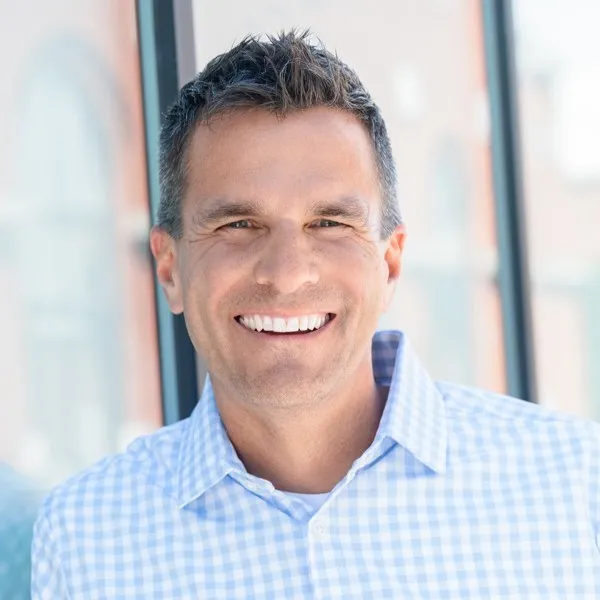.webp)
If you dread "Back to School," read this.
If you dread "Back to School," read this.
If you dread "Back to School," read this.
Every year, the same ritual plays out. New backpacks. Fresh notebooks. That first-day photo by the front door. Parents breathe a sigh of relief (or shed a tear) as kids board the bus. September (or thereabouts) means school starts. June means it ends. This is how it's always been.
But this outdated schedule was designed for a world that no longer exists. The traditional school calendar emerged when kids needed summers free to help with farm work. The September start made sense for the harvest schedule. We're now generations removed from that agricultural society, yet we're still following a calendar created for it.
Meanwhile, your eight-year-old's fascination with ancient Egypt doesn't suddenly shut off in June. Your teenager's coding projects don't need a three-month pause. And that moment when your child finally understands fractions might not happen according to the specific syllabus pacing.
For families in the OpenEd program, you've already taken the brave step of recognizing that learning doesn't have to follow someone else's schedule. Yes, our program year is starting, and if you need a moment to mark new beginnings, this season works as well as any. But here's what we want you to understand: you can create these fresh starts whenever your family needs them. In January after the holidays settle. In March when the days get longer. Or any time throughout the year that you sense your child needs renewed energy and focus.
The Real Solution: Your Own Learning Calendar
In 2012, NASA's Curiosity rover touched down on Mars. Before it could begin exploring, engineers had to solve a fundamental challenge: how do you design something to explore a world you've never visited?
They started with three essential questions:
- What does Mars need us to discover?
- What unique capabilities can we develop?
- What resources do we have?
Your child's education requires the same approach. Your child’s educational landscape is an unmapped terrain waiting to be explored. You can't use someone else's map or calendar. You need to chart your own course.
Here's a simple exercise that can transform how your family approaches learning. It doesn't require expensive curriculum or elaborate planning. Just sticky notes and genuine curiosity.
I share a detailed template for this exercise in the Open Education book, and you can also get started with a free printable worksheet before reading the whole chapter. Here’s a condensed version of how it works.
Step 1: The Discovery
Create a "Discovery Zone" in your home - a wall, poster board, or even the back of a door. Post these five questions:
- What do I like to learn about?
- What do I like to do or think about in my free time?
- What do I believe I'm good at doing?
- What am I not yet good at, but would like to improve?
- What activities do I genuinely dislike and have no interest in developing?
Give each family member a different color of sticky notes. Over the course of a week, everyone adds their thoughts whenever inspiration strikes. No judgment. No editing. No "right" answers.
Step 2: The Two-Week Sprint
Once you've gathered these insights, resist the urge to plan an entire year. Instead, use what we call "learner-driven sprints" - focused two-week learning adventures.
Why two weeks? Here, we can learn from the way that elite athletes train. They spend most of their time working at a moderate, sustainable pace and only a tiny percentage in bursts of intense, all-out exertion. Learning works the same way. Short, focused sprints followed by celebration and reflection create better results than constant grinding.
The sprint structure is simple:
- Day 1: 10-minute launch meeting to set goals
- Day 7: Quick check-in to adjust course if needed
- Day 14: Celebration where learning is shared
Step 3: Starting with What You Have
The next step is to take inventory of what you already have:
- Library card: Access to thousands of books, audiobooks, and programs
- Kitchen: A chemistry and math laboratory
- Backyard or local park: Biology and physics classroom
- YouTube, Out school, and Khan Academy: Millions of teachers at your fingertips
- Family and Community skills: Every adult in your life has expertise in something
OpenEd families have discovered that true personalization in education means curating the best options and letting parents and students choose what works best for them—by subject, by grade, by provider, and especially by child.
The traditional education system assumes all children should learn the same things at the same pace. But even identical triplets need different approaches to math. If children sharing the same DNA and home environment learn differently, how can we expect a standardized system to work for millions of unique minds?
This is why the open education mindset is so powerful. Instead of asking "What should my child know by this age?" we ask "What would my child like to discover right now?"
Your Family's Unique Rhythm
Some OpenEd families organize their year around dad's travel schedule. Others align with mom's busy season at work. Some do monthly sprints, others follow interests for entire seasons. We've seen families who:
- Combine morning homeschool with afternoon public school enrichment
- Discovered their night-owl teenager does best with math at 10:30 PM
- Have kids who learn better while moving, standing, or even lying on the floor
The freedom to choose isn't about having ZERO structure. It's about having the right structure for your unique child.
Making It Happen This Week
Start small. You don't need perfect conditions.
This week:
- Put up your Discovery Zone (even if it's just painter's tape on a door)
- Give everyone their sticky notes
- Set the expectation: one note per day minimum, no maximum
Next week:
- Gather to discuss what you've discovered
- Look for patterns and connections (especially across siblings and parents!)
- Choose one interest per family member for your first two-week sprint
In two weeks:
- Hold your first sprint celebration to share what each person learned
- Make it special but simple (pizza or ice cream works great)
- Adapt and plan your next sprint based on what the family discovered
Thousands of OpenEd families are discovering the open education mindset - recognizing that learning happens everywhere, all the time, in ways as unique as each child.
If you want to hear me elaborate on this exercise, and the 5 basic building blocks that I unpack with my co-author Isaac Morehouse, I invite you to come (with your questions!) to my free live event next Thursday, September 4 at 5pm MT.
The start of the calendar school year is upon us. But your family's learning year can begin whenever you decide you're ready!
Ready to implement these ideas? Get "Open Education" for 50% off this week only at opened.co/book. Join Matt Bowman's free live event on September 4th at 5:00 PM MT to learn the complete system for reimagining your child's education. Register at opened.co/open-education-breakthrough-event
Subscribe to The OpenEd Daily
Join 20,000+ families receiving curated content to support personalized learning, every school day.
.webp)




.png)
.png)